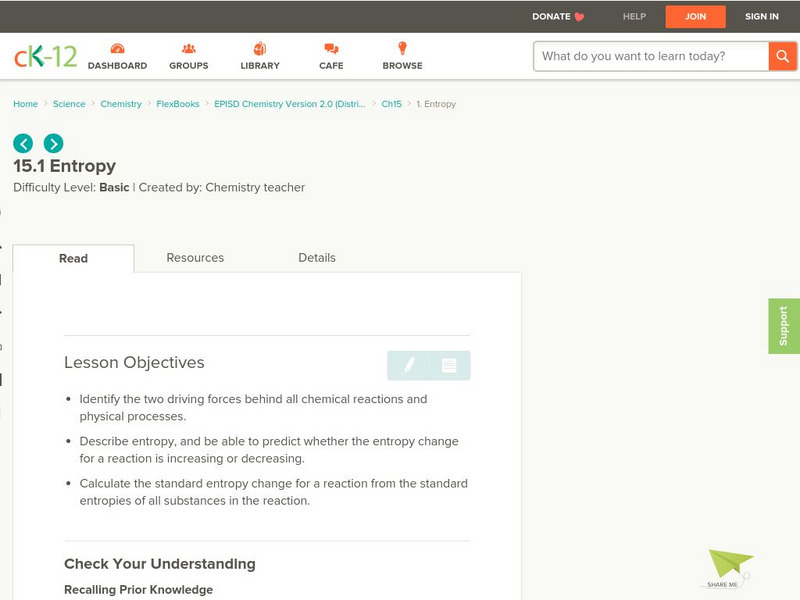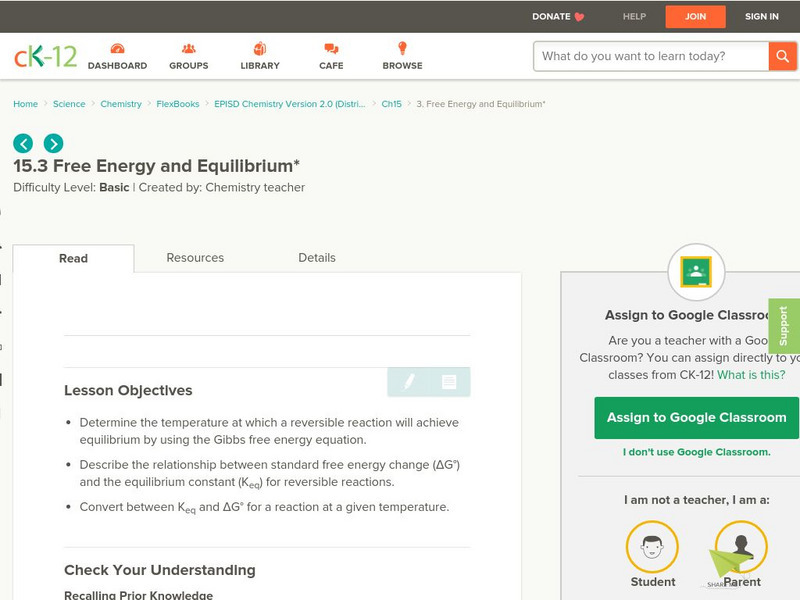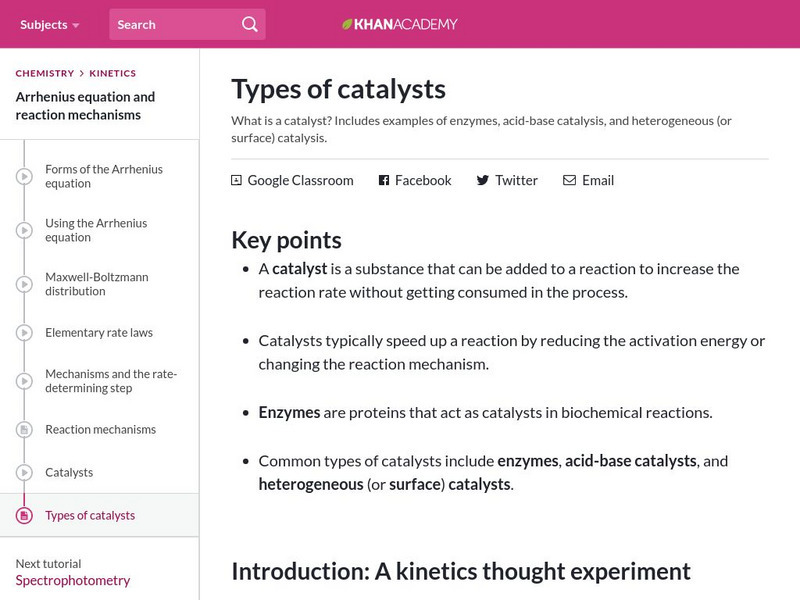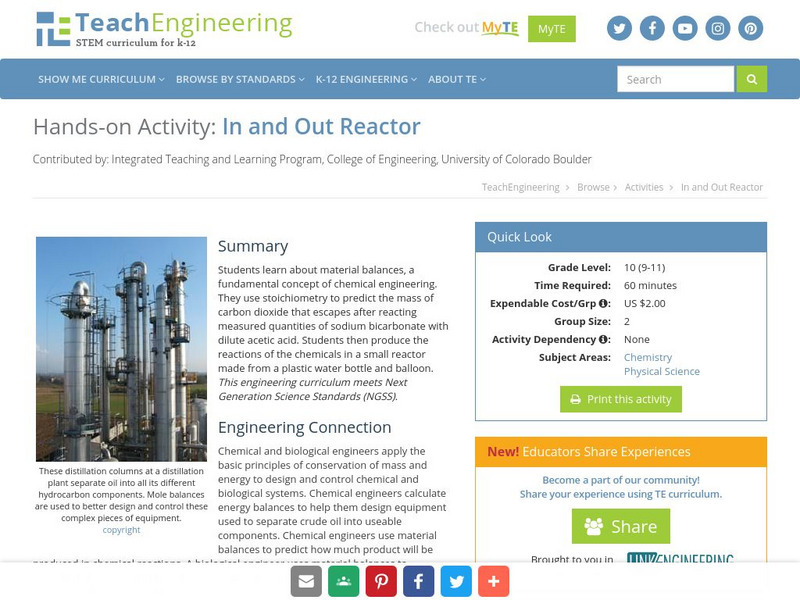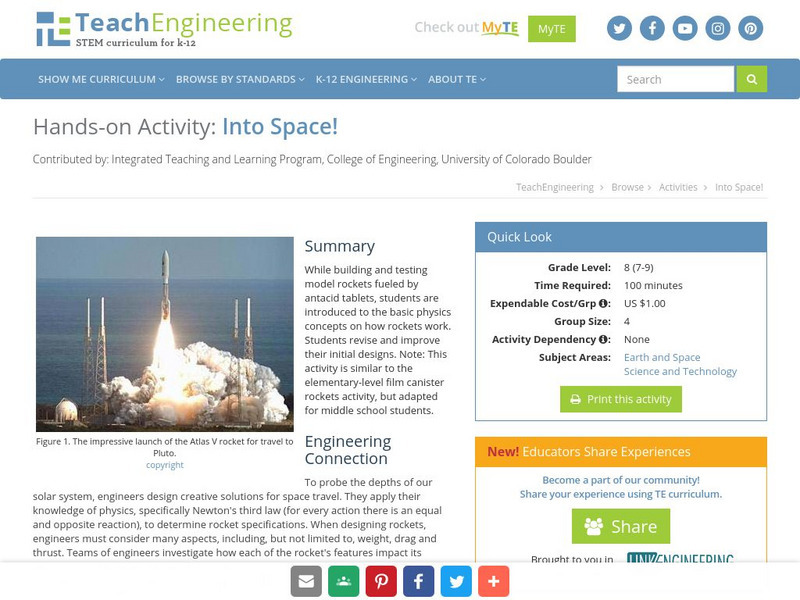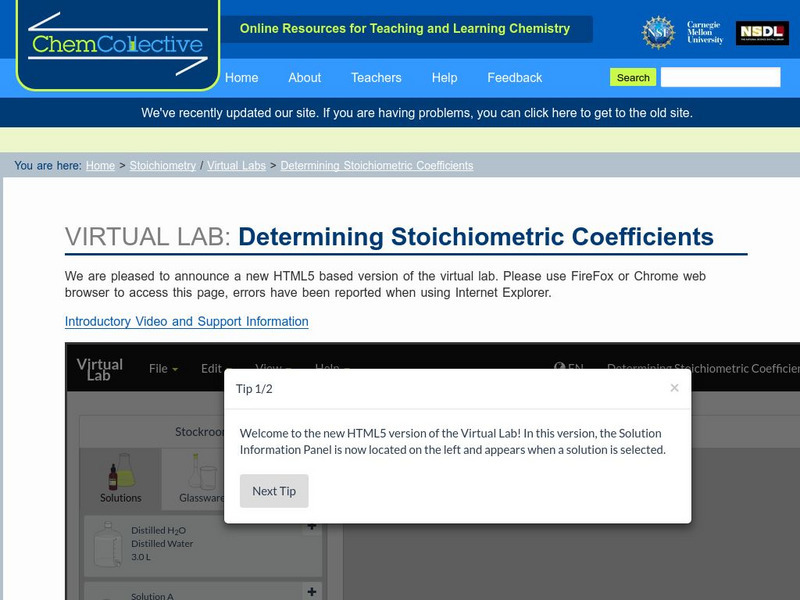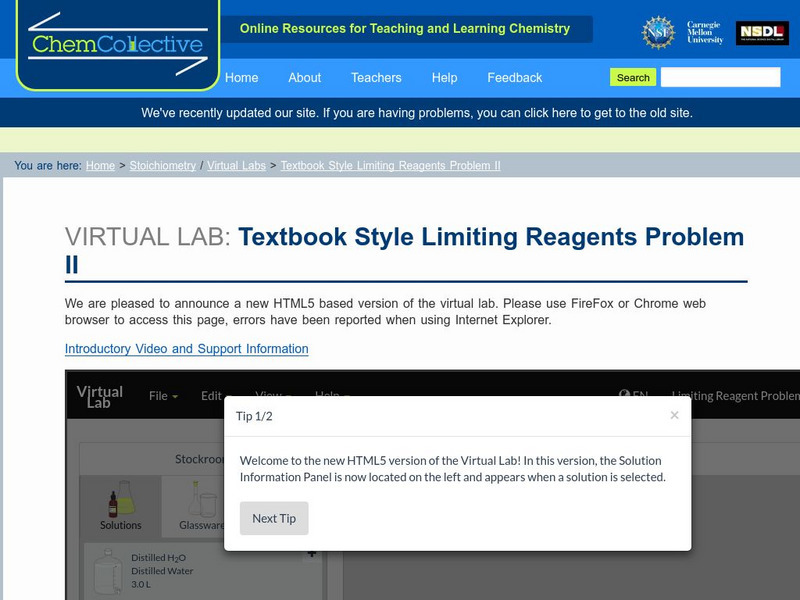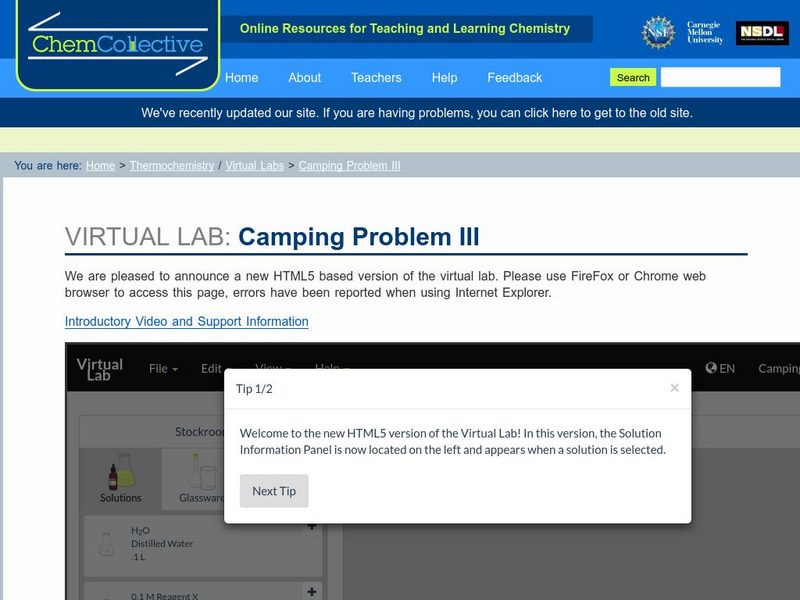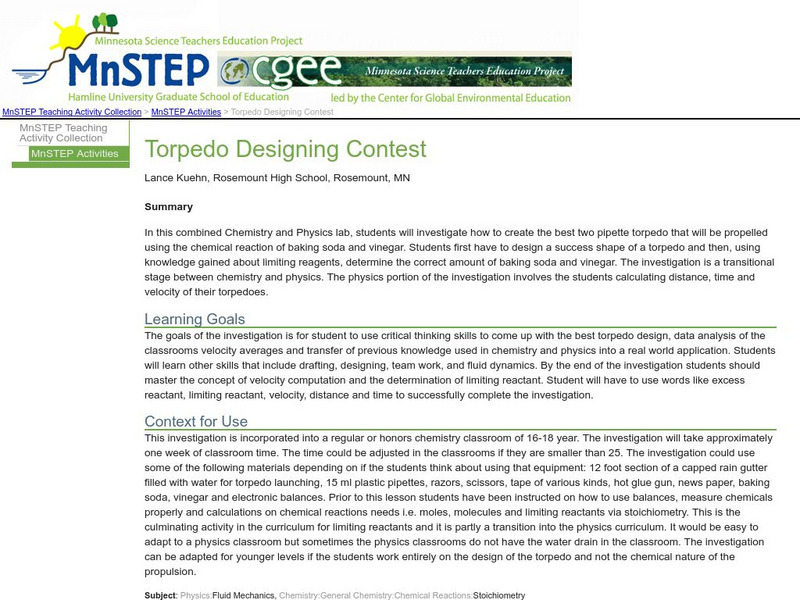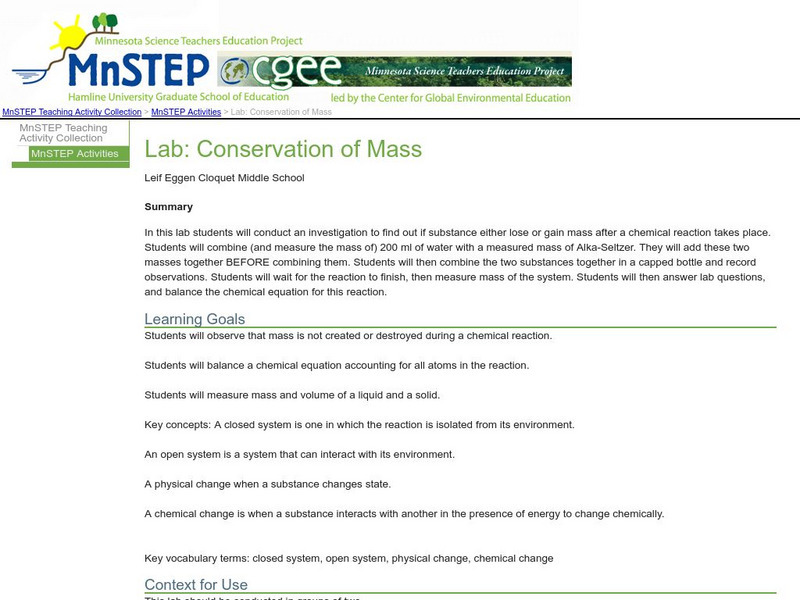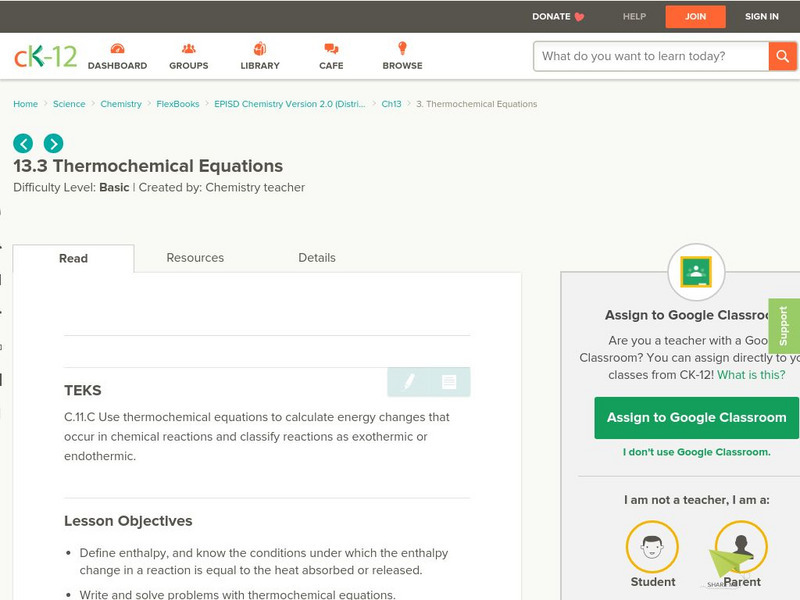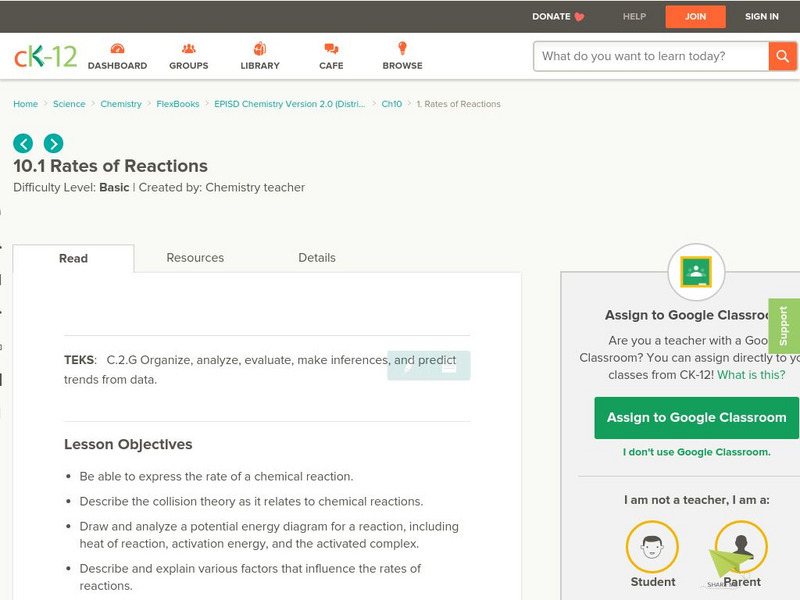Vision Learning
Visionlearning: Dalton's Playhouse
Travel back in history and visit the laboratories of Priestley, Lavoisier, and others. Take part in simulations of the experiments which laid the foundation for the scientific field of chemistry. Learn about the discoveries which lead to...
CK-12 Foundation
Ck 12: Entropy
[Free Registration/Login may be required to access all resource tools.] After identifying the two driving forces behind all chemical reactions and physical processes, students investigate entropy, and predict whether the entropy change...
CK-12 Foundation
Ck 12: Free Energy and Equilibrium
[Free Registration/Login may be required to access all resource tools.] Students determine the temperature at which a reversible reaction will achieve equilibrium by using the Gibbs free energy equation, and then describe the...
Georgia Department of Education
Ga Virtual Learning: Ap Chemistry: Welcome
An introduction to the College Board's AP Chemistry course, which is designed to be equivalent to a first year college chemistry course.
Khan Academy
Khan Academy: Types of Catalysts
What is a catalyst? This Khan Academy resource includes examples of enzymes, acid-base catalysis, and heterogeneous (or surface) catalysis.
American Chemical Society
American Chemical Society: Science for Kids: Chemical and Physical Change
Engaging hands-on science lessons for grades 2-6 on chemical and physical changes.
TeachEngineering
Teach Engineering: In and Out Reactor
Students learn about material balances, a fundamental concept of chemical engineering. They use stoichiometry to predict the mass of carbon dioxide that escapes after reacting measured quantities of sodium bicarbonate with dilute acetic...
TeachEngineering
Teach Engineering: Into Space!
While building and testing model rockets fueled by antacid tablets, students are introduced to the basic physics concepts on how rockets work. Students revise and improve their initial designs. Note: This activity is similar to the...
Chemistry Collective
Chem Collective: Acclimatization on Mt. Everest
To get to the top of the mountain before winter arrives, students must derive an equation that relates the necessary amount of hemoglobin to the partial pressure of oxygen at the current and next camp.
Chemistry Collective
Chem Collective: Stoichiometry Applet
One of the first numerical problems encountered in introductory chemistry is that of "limiting reagents". This applet serves as a supplement to such calculations, providing imagery that helps students see beyond the rote mathematics.
Chemistry Collective
Chem Collective: Determining Stoichiometric Coefficients
In this activity, students use the virtual lab to determine how four unknown substances react with each other including their stoichiometric coefficients.
Chemistry Collective
Chem Collective: Textbook Style Limiting Reagents Problem Ii
In this activity, students practice with experiments involving limiting reagents and the test their knowledge to determine the concentration of an unknown solution.
Chemistry Collective
Chem Collective: Camping Problem Iii
In this part of the MRE scenario, students create solutions that when mixed, increase to a certain temperature.
Science Education Resource Center at Carleton College
Serc: Torpedo Designing Contest
In this combined Chemistry and Physics lab, students investigate how to create pipette torpedoes that will be propelled using the chemical reaction of baking soda and vinegar.
American Chemical Society
Middle School Chemistry: Lesson Plans: What Is a Chemical Reaction?
After observing a demonstration of a chemical reaction between a burning candle and the oxygen in the air, students use atom model cut-outs to model the reaction and see that all the atoms in the reactants show up in the products.
Georgia Department of Education
Ga Virtual Learning: Chemistry: Stoichiometry
Through informational text, interactive practice problems, video clips, and real-world application, students are introduced to the science of Stoichiometry.
Science Education Resource Center at Carleton College
Serc: Lab: Conservation of Mass
This lab experiment shows students that mass is not gained or lost during a chemical reaction. Lab also includes a set of lab questions that requires students to balance the chemical equation for the reaction that occurs in this lab.
CK-12 Foundation
Ck 12: Thermochemical Equations
[Free Registration/Login may be required to access all resource tools.] Students investigate the conditions under which the enthalpy change in a reaction is equal to the heat absorbed or released. Then, they have the opportunity to write...
Concord Consortium
Concord Consortium: Stem Resources: Chemical Reactions
This web-based activity gives students an opportunity to write chemical reactions, balance chemical equations, and explain what is happening during a given chemical reaction. Also addressed is the effects of concentration and temperature...
Chiral Publishing
Chiral Publishing: An Introduction to Chemistry: Types of Chemical Reactions: Audio Book
Listen and learn about different types of chemical reactions such as combination, combustion and decomposition. Learn different steps on how to write combustion equations and view how single displacement reaction occurs.
Concord Consortium
Concord Consortium: Molecular Workbench Showcase: Chemistry, Reactions
Simulations that can help students visualize and understand concepts in chemistry like the collision theory, chemical reaction equilibrium, and polymerization.
CK-12 Foundation
Ck 12: Rates of Reactions
[Free Registration/Login may be required to access all resource tools.] In this module, students will practice expressing the rates of chemical reactions, and they will also describe the collision theory as it relates to chemical reactions.
PBS
Pbs Learning Media: Fa Qs About Nuclear Power
Nuclear physicist, Dr. Charles Till, answers questions about nuclear power in this interview from the FRONTLINE Web site.
American Chemical Society
Middle School Chemistry: Lesson Plans: Using Chemical Change to Identify Unknown
Students observe reactions of liquids with different known powders in this lesson. Unknown powders are then identified using characteristic chemical changes.Site includes a procedure, teacher instructions, and video instruction.



